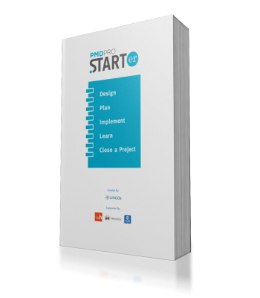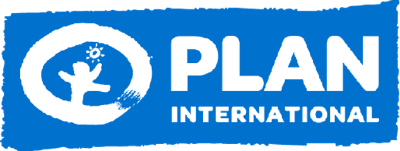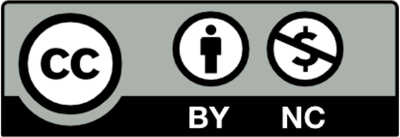Implementation Plan
I want to plan a project...
by developing a comprehensive map for project implementation
LEVEL OF INVOLVEMENT: COMPLEX TOOL
Through interactive planning, this tool enables you to monitor your projects progress and activities.
Through interactive planning, this tool enables you to monitor your projects progress and activities.
Plan a project by developing a comprehensivemap for project implementation

WHAT is it?
You have already invested a lot of time in the Identification and Design phases, using tools to set up your project in the best possible way. Tempting as it is to now move swiftly into implementation, it’s imperative that you build in time to develop your Project Implementation Plan.
It’s one of the most important tools in your kit!
It draws on insights from the other tools that you have developed, enabling you to work through a detailed overview of your project’s scope, cost and schedule.
Your Implementation Plan differs significantly from outputs from the other tools that you have used. It will guide all of your project activities and provide the overview that you need to monitor the progress of your work.
It’s one of the most important tools in your kit!
It draws on insights from the other tools that you have developed, enabling you to work through a detailed overview of your project’s scope, cost and schedule.
Your Implementation Plan differs significantly from outputs from the other tools that you have used. It will guide all of your project activities and provide the overview that you need to monitor the progress of your work.
HOW do I use it?
Teamwork: Once your Project Charter has been signed off, it’s time to get your team together to complete your Implementation Plan. Working through the plan together is a great way of ensuring that everyone understands what happens next.
After achieving sign-off on her Project Charter in record time, Amira from UNITAS knew that she needed to complete one last process before project activities could begin. She had already completed a strong and detailed Project Proposal for her donor – could she use this instead of having to work through an Implementation Plan? After talking to a few colleagues, she quickly realized that the Implementation Plan differed significantly in terms of focus and detail. Amira then called a team meeting to agree to the initial Plan.
Format: The format of your Implementation Plan will vary according to the size, scope, complexity and level of risk incurred in your project.
1. Introduction
In the introduction, make sure to summarize your project, define the problem(s) your project is addressing, state your goals and objectives, and define your intended audience.
2. Project Objectives
In this section, discuss your projects objectives and activities in detail.
3. Implementation Schedule (Gantt Chart)
Refer to your Gantt Chart to define your implementation schedule.
4. Discuss a Human Resource Plan
Clearly state your projects personnel requirements and their roles and responsibilities.
5. Project Budget
State how your project will be financed.
6. Project Communications Plan
Discuss how you, your project phases will be monitored.
7. Appendix
In the final section of your Implementation Plan, explain your projects logical framework.
After achieving sign-off on her Project Charter in record time, Amira from UNITAS knew that she needed to complete one last process before project activities could begin. She had already completed a strong and detailed Project Proposal for her donor – could she use this instead of having to work through an Implementation Plan? After talking to a few colleagues, she quickly realized that the Implementation Plan differed significantly in terms of focus and detail. Amira then called a team meeting to agree to the initial Plan.
Format: The format of your Implementation Plan will vary according to the size, scope, complexity and level of risk incurred in your project.
1. Introduction
In the introduction, make sure to summarize your project, define the problem(s) your project is addressing, state your goals and objectives, and define your intended audience.
2. Project Objectives
In this section, discuss your projects objectives and activities in detail.
3. Implementation Schedule (Gantt Chart)
Refer to your Gantt Chart to define your implementation schedule.
4. Discuss a Human Resource Plan
Clearly state your projects personnel requirements and their roles and responsibilities.
5. Project Budget
State how your project will be financed.
6. Project Communications Plan
Discuss how you, your project phases will be monitored.
7. Appendix
In the final section of your Implementation Plan, explain your projects logical framework.
WHEN do I use it?
A living document: Your Implementation Plan isn’t a static document. You will need to refer to it regularly, updating it as you move through different project phases. As you add more detail to the Plan, you will find that its value increases, providing the insight that you need to ensure that your schedule, costs and resources are in line with your project scope.
This process is often referred to as ‘iterative’ or ‘rolling wave’ planning. It is particularly useful in situations where project information is difficult to collect or is changing rapidly (high risk or emergency contexts).
Who is involved?
A detailed Project Implementation Plan is integral for the success of your project. Additionally, it is important to make sure that all individuals involved in your project are aware of the Implementation Plan. This includes your team, project donor(s), and colleagues.
Tips:
Caution: NGOs often use Project Proposals as implementation plans – especially when donors ask for highly detailed documents. Don’t take a shortcut here! Even the most expansive Project Proposals have weaknesses that limit their effectiveness for project implementation.
Additional Resources
Download the additional resources and the Project DPro (PMD Pro) Pocket Guide

Supported & Developed by:
Shared by:
Users are free to copy/redistribute and adapt/transform
for non-commercial purposes.
© 2022 All rights reserved.




